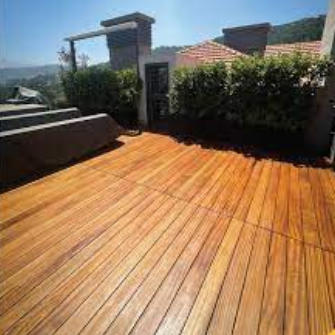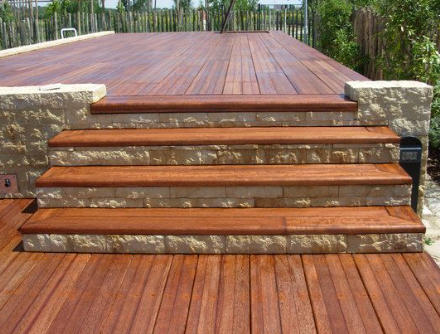Views: 222 Author: Rebecca Publish Time: 2025-10-23 Origin: Site











Content Menu
● Origin and Botanical Background
● Physical Properties of Iroko Wood
● Mechanical Strength and Performance
● Environmental and Sustainability Aspects
>> 1. Outdoor Furniture and Decking
>> 2. Marine and Boatbuilding Applications
>> 3. Flooring and Interior Design
>> 4. Architectural Joinery and Construction
>> 5. Musical Instruments and Art Pieces
>> 6. Industrial and Engineering Uses
● Cultural and Symbolic Importance
>> (1) What makes Iroko wood different from Teak?
>> (2) Is Iroko wood suitable for marine use?
>> (3) How durable is Iroko wood outdoors?
>> (4) Can Iroko be used indoors?
>> (5) Is Iroko wood sustainable?
Iroko wood, often referred to as “African Teak,” is a versatile and durable hardwood native to tropical Africa. It has gained international popularity as a sustainable alternative to teak due to its strength, aesthetic beauty, and environmental resilience. This article explores in detail the physical properties, characteristics, and diverse uses of Iroko wood across multiple industries, along with its significance in art, culture, and modern architecture.

Iroko wood comes from two closely related species—*Milicia excelsa* and *Milicia regia*—belonging to the Moraceae family, which also includes mulberry and fig trees. These trees are primarily found across West and Central Africa, stretching from Sierra Leone to Tanzania and Mozambique. Mature Iroko trees can grow up to 40 meters (130 feet) high, with trunks exceeding 1.5 meters (5 feet) in diameter, making them valuable for producing large timber planks suitable for industrial-scale use.[6][7]
Because of the tree's impressive size and long lifespan—sometimes more than 500 years—it has been respected in African culture as a sacred tree symbolizing protection and longevity.
Iroko wood exhibits outstanding physical and mechanical properties, making it a first-rate choice for construction, furniture, and marine applications.
- Density and Hardness: Iroko's density averages 660 kg/m³, and it holds a Janka hardness rating of about 1,260 lbf, similar to oak and teak.[2][3]
- Color: The heartwood color ranges from yellow-golden to deep brown, often darkening with age into rich bronze tones.[1][4]
- Grain and Texture: Its grain is typically interlocked, producing a ribbon-like figure when quarter-sawn, while its texture is medium to coarse with natural luster.[3]
- Durability: Naturally resistant to rot, insect attacks, and moisture, Iroko is classified as one of the most durable tropical hardwoods.[7][1]
- Dimensional Stability: Due to its oily and waxy nature, Iroko has low shrinkage and maintains structural integrity under fluctuating humidity levels.[4][2]
These factors contribute to its reputation as a high-performance timber both for outdoor and indoor environments.
Mechanically, Iroko stands out for its bending and crushing strength. It has a modulus of rupture (MOR) of approximately 12,700 lbf/in⊃2; and a modulus of elasticity (MOE) of 1.36 million lbf/in⊃2;, making it strong enough for heavy-duty structural applications like bridge decking and dock construction.[3]
Although somewhat oily, Iroko is still workable with both hand and machine tools, although it can dull blades quickly due to its calcium carbonate deposits. Most woodworkers recommend tungsten-carbide blades for machining Iroko to achieve smooth results.[1][2]
Despite its density, Iroko is relatively easy to work with using appropriate tools and techniques. The interlocked grain may cause slight tear-out during planing, but this can be mitigated with sharp cutters. It glues, screws, and finishes well, creating smooth and polished surfaces used in fine joinery, furniture, and decorative veneers.[2][7]
Unlike some tropical woods, Iroko does not require frequent oil or varnish treatments even in outdoor settings, although finishing can help preserve its golden coloration against UV-induced graying.[8]
Iroko is considered a more sustainable alternative to traditional teak because it grows relatively quickly and thrives in various African ecosystems. According to the IUCN Red List, Iroko is classified as “Lower Risk/Least Concern,” meaning its population remains stable when harvested under managed forestry practices.[2]
For ethical sourcing, buyers should look for suppliers certified by FSC (Forest Stewardship Council) or PEFC (Programme for the Endorsement of Forest Certification), ensuring eco-friendly harvesting and fair labor standards.
Iroko wood's adaptability allows it to be used across industries ranging from marine construction to fine interior furnishing. Below are its most common applications.
Iroko's high resistance to weathering and insect attacks makes it a preferred choice for outdoor furniture, pergolas, garden benches, and patios. It withstands humidity and UV damage exceptionally well, outperforming many less durable timbers. The wood's elegant warm tones and coarse texture give outdoor spaces a sense of luxury and natural beauty.[9][4]
Due to its natural oils and resistance to saltwater degradation, Iroko has long been used in boatbuilding. It is suitable for constructing decks, hulls, and joinery elements in yachts, piers, and harbors. Its similarity to teak has earned it the nickname “African Teak,” providing an economical yet reliable substitute for marine-grade timber.[5][7][3]

Iroko flooring offers durability and an inviting aesthetic. When polished, the wood exudes rich hues from light copper to dark brown, making it ideal for high-traffic residential or commercial interiors. Its dimensional stability ensures minimal movement due to moisture changes, a major advantage in modern architecture.[6][2]
Beyond flooring, interior designers use Iroko for kitchen countertops, cabinets, staircases, and millwork due to its consistent pattern and radiant finish.
In architecture, Iroko serves multiple structural and decorative purposes. Its strength and durability make it useful for doors, window frames, handrails, and cladding in both residential and civic buildings. It's often chosen for coastal projects and tropical climates where exposure to sun and rain would ruin lesser woods.[4][6]
Artisans and sculptors appreciate Iroko's dense structure and fine polish for crafting drums, carvings, frames, and ornamental items. African craftsmen have long used Iroko for traditional instruments, associating its resonance and durability with longevity and spiritual power.[10]
Because of its hardness and load-bearing capabilities, Iroko is also used in machine beds, tool handles, and heavy framing. Railway sleepers, bridge decking, and industrial flooring projects often feature Iroko for its resistance to wear and minimal maintenance costs.[3]
| Feature | Iroko (African Teak) | Teak (Tectona grandis) |
|---|---|---|
| Density | 660 kg/m³ | 640–680 kg/m³ |
| Janka Hardness | 1,260 lbf | 1,155 lbf |
| Water Resistance | Excellent | Superior |
| Color | Golden to dark brown | Honey golden brown |
| Maintenance | Low; may need oiling | Very low |
| Price | 30–50% less expensive | Premium cost |
| Common Uses | Furniture, decking, boats | Yachts, luxury furniture |
In West African mythology, the Iroko tree is believed to house protective spirits. Among the Yoruba, the tree symbolizes wisdom and stability, and it is often planted near villages to signify endurance. The wood's use in ritual items and ancestral shrines underscores its role not only as a construction material but also as a cultural heritage element.[10]
Although Iroko is low-maintenance, applying oil or outdoor wood sealant once a year can help retain its warm color. If left untreated, Iroko will naturally weather into a silver-gray patina, which some designers prefer for a more rustic look. Regular cleaning with mild soap and water is sufficient for everyday upkeep.[2]
Iroko wood stands as one of Africa's most valuable timber exports for good reason. Its strength, natural beauty, and weather resistance make it suitable for a broad spectrum of applications—from marine structures and architectural design to traditional crafts and musical instruments. Its affordability relative to teak and sustainable growth further enhance its global appeal.
For anyone seeking a durable, elegant, and eco-friendly wood material, Iroko delivers a balance of performance, aesthetics, and conscience that few other hardwoods can match.

Iroko offers similar strength and water resistance as teak but is generally more affordable. While teak has a smoother texture and higher oil content, Iroko's coarse grain and golden-brown color offer a distinctive, rustic appeal.[5][7]
Yes. Iroko is highly resistant to saltwater, decay, and marine borers, making it ideal for ship decks, docks, and outdoor coastal constructions.[7][3]
Iroko's dense fiber structure allows it to withstand extreme weather, sunlight, and insect damage without the need for chemical treatment.[4][2]
Absolutely. Its attractive dark tones and dimensional stability make it perfect for flooring, ceilings, and high-end furniture.[1][6]
Yes. Classified as “Lower Risk” on the IUCN Red List, it remains an environmentally responsible choice, particularly when sourced from certified forests.[2]
[1](https://www.wood-database.com/iroko/)
[2](https://duffieldtimber.com/the-workbench/buyers-guides/your-guide-to-iroko)
[3](https://www.mcilvain.com/iroko/)
[4](https://www.lab23.it/en/iroko-wood-properties-and-advantages/)
[5](https://stylenations.com/selecting-the-right-furniture-materials-iroko-wood-versus-teak-what-you-need-to-know)
[6](https://k-timbers.com/outstanding-uses-of-iroko-wood-in-daily-life/)
[7](https://rahlumber.com/product/iroko/)
[8](https://en.wikipedia.org/wiki/Iroko)
[9](https://ecochoice.co.uk/why-iroko-wood-for-outdoor-projects/)
[10](https://www.thorogood.co.uk/the-irokos-indomitable-role-in-african-culture/)